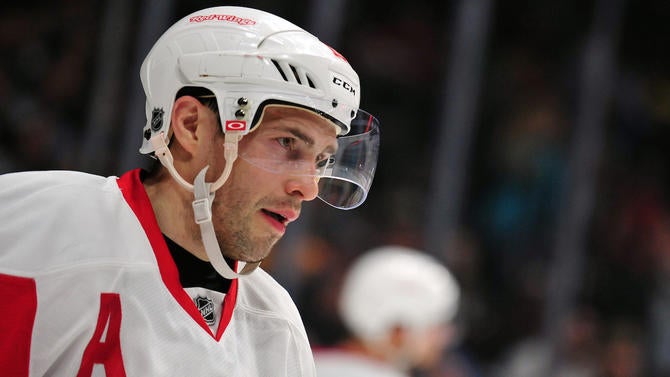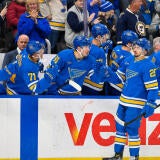Red Wings dump Datsyuk's contract on Coyotes, become players for Stamkos
The Detroit Red Wings cleared significant salary cap space on Friday for a potential move in free agency

One of the most intriguing trades that took place on Friday night during the first round of the 2016 NHL draft involved a player that will never play in the NHL again.
In the middle of the first round the Detroit Red Wings traded the No. 16 overall pick in the draft and Pavel Datsyuk's contract to the Arizona Coyotes for the No. 20 pick (which previously belonged to the New York Rangers and went to Arizona as part of the Keith Yandle trade), the No. 53 pick in the NHL draft, and forward Joe Vitale.
So here's what happens with this deal, how it is kind of a win-win situation for both teams, and how it could impact the Steven Stamkos free agency pursuit.
The Coyotes moved up to get a player they like and get some salary help. There are two motivating factors for the Coyotes to make this deal. First is they get an opportunity to move up in the draft to get strong defense prospect in Jakob Chychrun.
They also take on the $7.5 million salary cap hit that belongs to Datsyuk that helps get Arizona closer to the salary cap floor -- something they were still pretty far away from doing before the trade -- without having to fill a roster spot to do so or pay any actual money.
Between Datsyuk and the contract for Chris Pronger (which they acquired at the draft a year ago) the Coyotes now have $12.4 million of their cap space going to players that are retired from the NHL. They are only on the hook for less than $600,000 in actual salary, all of it going to Pronger because he has not officially "retired" from the NHL. His contract with the Flyers was heavily front loaded and only carries an NHL salary of $575,000 this season. That is all the Coyotes are on the hook for financially. Everything else is just a paper transaction for salary cap purposes.
The Red Wings are suddenly major players in free agency. The benefit for the Red Wings here is obvious.
By dumping Datsyuk's contract they clear some significant space under the salary cap.
Because Datsyuk's signed his contract after the age of 35, the Red Wings were going to be on the hook for the cap hit even after he retired unless they could find somebody to trade for it in a deal like this.
General manager Ken Holland was not optimistic about being able to do that because he did not want to give up significant young assets to get somebody to take on Datsyuk's deal. In the end, he ended up gaining an asset (a second-round pick) to do so, while also clearing $6.4 million in cap space after you factor in the $1.1 million salary that is still owed to Vitale.
What does that additional cap space do for them? Well, it makes them potential players in the Steven Stamkos sweepstakes if -- when? -- he hits the open market on July 1.
Datsyuk trade motivated to get in on Stamkos. Florida expressed some interest in Datsyuk contract, but wanted Det to take Bolland contract.
— Darren Dreger (@DarrenDreger) June 25, 2016
If he ends up reaching the open market -- and at this point that seems to be where this is headed -- he is going to be one of the most sought after free agents the NHL has ever seen, and the Red Wings for any number of reasons seem to be a fit. They have a new arena opening, have a huge hole in their lineup with the departure of Datsyuk this offseason and the fact Henrik Zetterberg is going to be another year older, and they now have the type of cap space that would be required to give Stamkos the type of mega contract he is going to command on the open market.
Starting at 12 a.m. ET on Saturday players that are eligible for free agency on July 1 can begin meeting with other teams around the NHL.


















